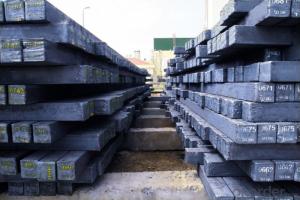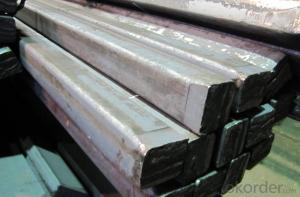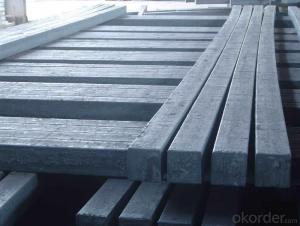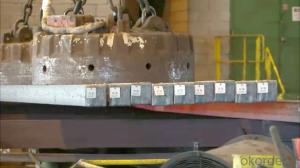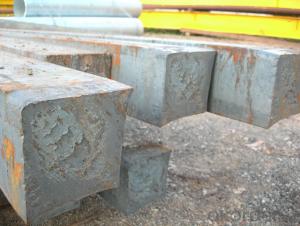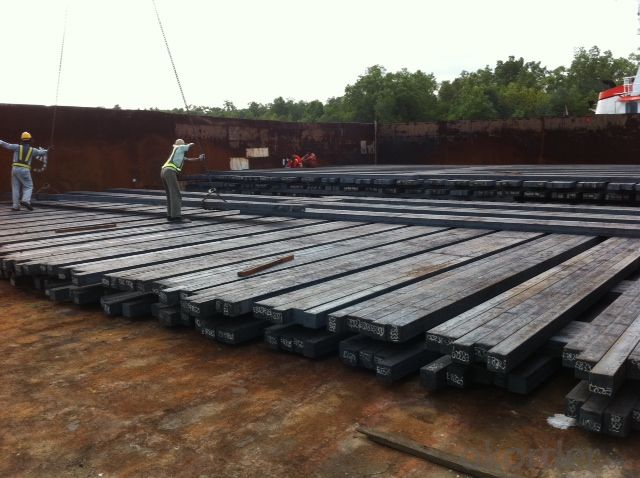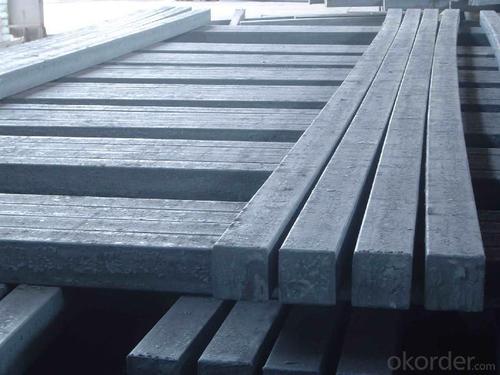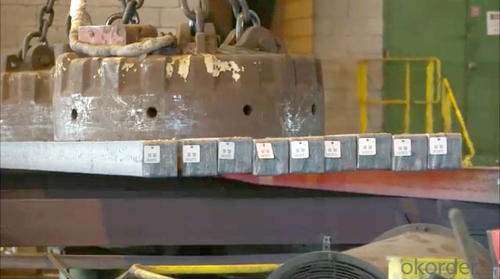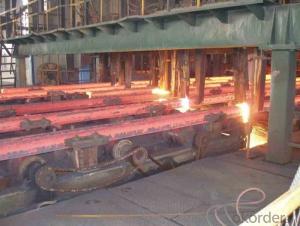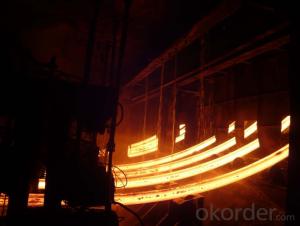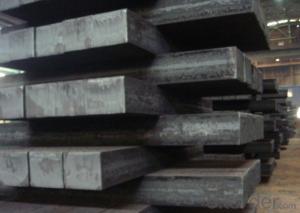Hot Rolled Steel Billet 3SP Standard 170mm
- Loading Port:
- Shanghai
- Payment Terms:
- TT OR LC
- Min Order Qty:
- 100 m.t.
- Supply Capability:
- 10000 m.t./month
OKorder Service Pledge
OKorder Financial Service
You Might Also Like
Structure of Hot Rolled Steel Billet 3SP Standard 170mm
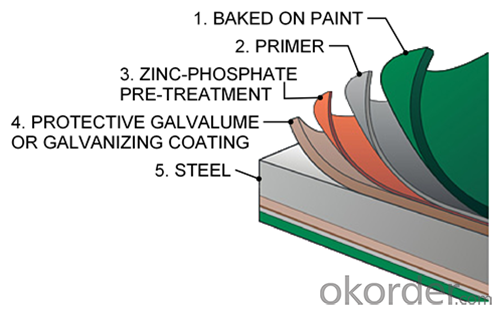
Description of Hot Rolled Steel Billet 3SP Standard 170mm
Prepainted Rolled steel Coil is a kind of coated steel coil/sheet. With the cold rolled steel of different strength and thickness as substrate, it is produced through applying Al-Zn coat on both faces by hot dip process. In its coating, Al accounts for about 55%, Si 1.6%, while the remaining is Zn. Aluminum zinc coils enjoys both the physical protective feature and durability of Al and the electrochemical protective property of Zn. And its surface has bright silver color and regular embossed-like figure, which are highly decorative. RAL Scale Z35 Prepainted Rolled Steel Coil for Construction Roofing
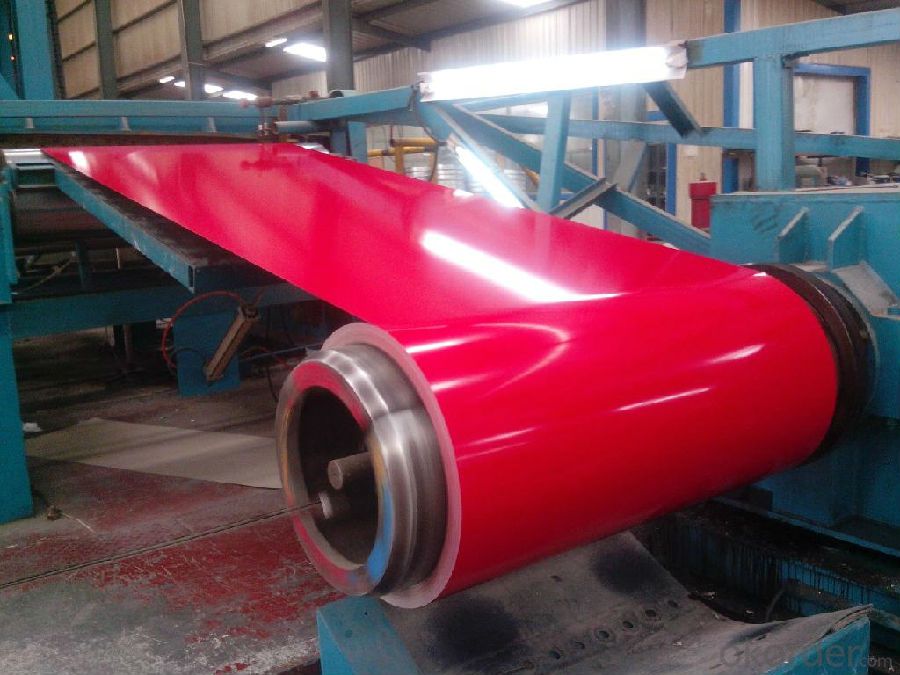
Main Feature of Hot Rolled Steel Billet 3SP Standard 170mm
1.Corrosion resistance: It mainly depends on the zinc protection. When the zinc being worn,
2. Heat resistance: steel sheet has excellent heat resistance, can withstand high temperatures over 300 centigrade, and is similar with aluminized steel high temperature oxidation resistance. It often used in chimney pipes, ovens, fluorescent lighting device and the device cover.
3. Heat reflective: Galvanized steel plate heat-reflective high rate is twice as galvanized steel, often used to make insulation materials. RAL Scale Z35 Prepainted Rolled Steel Coil for Construction Roofing
Applications of Hot Rolled Steel Billet 3SP Standard 170mm
1. Construction and building: roofing; ventilating duct; handrail; partition panel;etc.
2. Electric appliance: refrigerator; washing machine; refrigerator; DVD;etc.
3.Transportation: oil tank; gas tank;road sign; etc.
4.Agriculture constructions :barn; etc.RAL Scale Z35 Prepainted Rolled Steel Coil for Construction Roofing
5.Others:vending machine; game machine; auto parts spare parts etc.
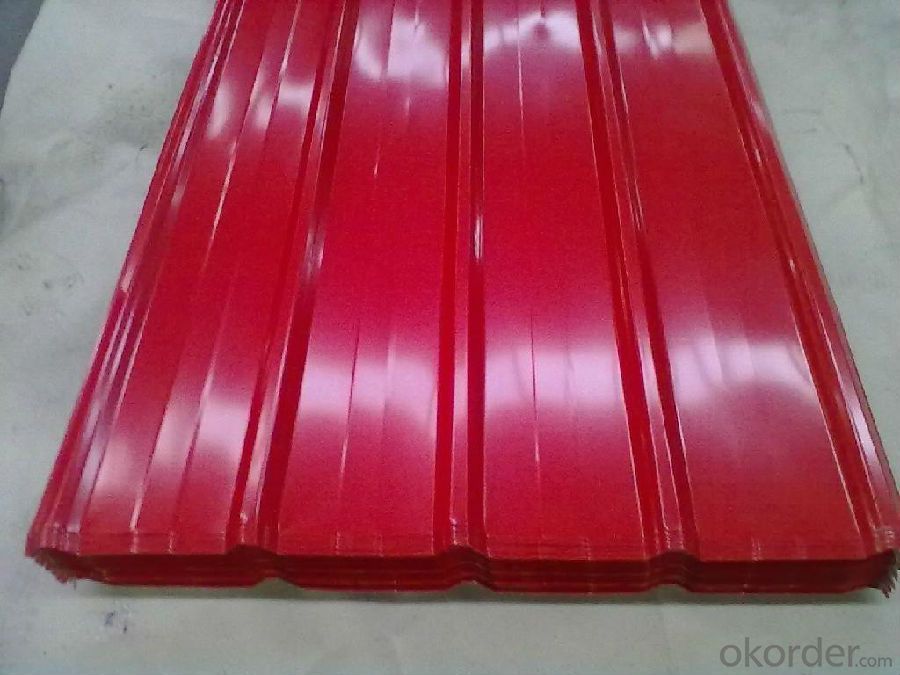
Specifications of Hot Rolled Steel Billet 3SP Standard 170mm
Product | Hot Rolled Steel Billet 3SP Standard 170mm |
Material Grade | SGCC / SGCH / DX51D+AZ, etc |
Thickness | 0.5-3.0mm |
Width | 700-1500mm |
Tolerance | Thickness: +/-0.02mm , Width:+/-2mm |
Zinc-coating | AZ30-150g/m2 |
Technique | Raw material: Hot rolled steel coil --> Cold rolled_>hot dipped galvalume |
Surface | Dried, Chromated, Unoiled,RAL Scale Z35 Prepainted Rolled Steel Coil for Construction Roofing |
Spangle | Regular spangle , small spangle, zero spangle |
ID | 508MM 610MM |
Coil weight | 25MT max |
Export package | Cardboard inner sleeves, Waterproof paper, galvanized steel covered and steel strip packed |
FAQ of Hot Rolled Steel Billet 3SP Standard 170mm
We have organized several common questions for our clients,may help you sincerely:
1. What is the minimum order quantity ?
Our MOQ is 100 mt for each size each specification. Usually we can offer discount if can buy large QTY once. RAL Scale Z35 Prepainted Rolled Steel Coil for Construction Roofing
2. How long can we receive the product after ordering?
Our general delivery time is 30 days after confirmation, but so some special orders, we have offer special delivery time
3. How to guarantee the quality of the products?
We have established the international advanced quality management system ,every link from raw material to final product we have strict quality test;We resolutely put an end to unqualified products flowing into the market. At the same time, we will provide necessary follow-up service assurance.
4. What is the payment?
We accept T/T, L/C
- Q: How are steel billets inspected for internal defects?
- Steel billets are inspected for internal defects using various non-destructive testing (NDT) techniques. One common method is ultrasonic testing (UT), where high-frequency sound waves are used to detect defects inside the billet. A transducer sends ultrasonic waves into the billet, and the reflected waves are analyzed to identify any internal flaws. UT is capable of detecting defects such as cracks, voids, inclusions, and other discontinuities. Another method employed is magnetic particle inspection (MPI). This technique is particularly useful for detecting surface and near-surface defects in ferromagnetic materials like steel. A magnetic field is applied to the billet, and iron particles are spread over the surface. If there is a defect, the magnetic field will cause the particles to form visible indications, providing a clear indication of any internal flaws. Liquid penetrant testing (PT) is another widely used method for inspecting steel billets. In this process, a liquid dye is applied to the surface of the billet and allowed to penetrate any surface-breaking defects. After a specified time, excess dye is removed, and a developer is applied. The developer draws out the penetrant from any defects, making them visible under proper lighting conditions. Additionally, radiographic testing (RT) can be employed to detect internal defects in steel billets. This method uses X-rays or gamma rays to capture images of the billet's internal structure. The radiation passes through the billet, and a film or digital detector records the transmitted radiation. Any internal defects will appear as shadows on the image, allowing for their identification. Overall, a combination of these NDT techniques is often used to ensure thorough inspection of steel billets for internal defects. This helps maintain the quality and integrity of the billets, ensuring they meet the required specifications and standards.
- Q: What are the different types of steel billet rolling mill defects?
- There are several types of steel billet rolling mill defects that can occur during the rolling process. These defects can have various causes and can affect the quality and performance of the final product. Some of the common types of defects include: 1. Surface defects: These defects are visible on the surface of the rolled billet and can include scratches, cracks, pits, and scale. Surface defects can be caused by improper handling, inadequate lubrication, or excessive rolling pressures. 2. Shape defects: Shape defects refer to the deviations from the desired shape of the billet. These can include bowing, twisting, or excessive tapering. Shape defects can be caused by uneven cooling, improper alignment of the rolling mill, or incorrect rolling parameters. 3. Internal defects: Internal defects are defects that are not visible on the surface but can affect the structural integrity of the billet. These defects can include segregation, porosity, and inclusions. Internal defects can be caused by the presence of impurities in the raw material, improper heating or cooling, or inadequate quality control measures. 4. Dimensional defects: Dimensional defects refer to deviations from the desired dimensions of the billet, such as variations in length, width, or thickness. These defects can be caused by improper calibration of the rolling mill, incorrect rolling parameters, or inadequate quality control measures. 5. Metallurgical defects: Metallurgical defects are defects that occur due to improper metallurgical processes during rolling. These defects can include grain size variations, improper grain flow, or undesirable microstructure. Metallurgical defects can be caused by improper temperature control, inadequate alloying, or insufficient heat treatment. It is important for steel billet rolling mills to have proper quality control measures in place to identify and rectify these defects. Regular inspections, testing, and monitoring of the rolling process can help to minimize these defects and ensure the production of high-quality steel billets.
- Q: What are the challenges faced in steel billet manufacturing?
- Steel billet manufacturing encounters various challenges. One of the primary obstacles is the attainment of consistent quality and uniformity in the billets. The billets must possess precise chemical composition and physical properties to meet the requirements of the end products. However, fluctuations in raw materials, like iron ore and scrap metal, can influence the billets' quality. Ensuring consistent quality throughout the production process is crucial but is difficult due to the variable nature of the raw materials. Another challenge lies in ensuring the appropriate heat treatment of the billets. Heat treatment is necessary to enhance the mechanical properties of the steel billets, but it demands precise control over temperature, time, and cooling rates. Any deviation from the recommended heat treatment process can lead to inconsistent mechanical properties, resulting in a decline in the overall billet quality. Furthermore, the production of steel billets involves intricate and energy-intensive processes. Manufacturing facilities must possess advanced equipment and technology to handle the high temperatures required for melting and casting the steel. The continuous casting process, commonly used for billet production, necessitates precise control over various parameters, such as casting speed and cooling rates. Maintaining the equipment and ensuring its proper functioning can be a challenge in itself. Moreover, environmental concerns present challenges in steel billet manufacturing. The process generates significant emissions of greenhouse gases, particulate matter, and other pollutants. Stricter environmental regulations and the need to reduce the carbon footprint of the manufacturing process require steel producers to invest in energy-efficient technologies and implement sustainable practices. Lastly, the market demand for steel billets can be volatile, posing challenges in production planning and inventory management. Demand fluctuations can result in overproduction or stockouts, impacting the overall efficiency and profitability of the manufacturing process. Overall, steel billet manufacturing encounters challenges related to maintaining consistent quality, achieving proper heat treatment, managing energy-intensive processes, addressing environmental concerns, and adapting to market dynamics. Overcoming these challenges necessitates continuous improvement, technological investments, and adherence to stringent quality standards.
- Q: What are the different types of cleaning equipment used for steel billets?
- There are several different types of cleaning equipment that are commonly used for steel billets. These include: 1. Shot blasting machines: Shot blasting is a process that involves propelling small metal or mineral particles at high speed onto the surface of the steel billets. This helps to remove any rust, scale, or other contaminants, leaving the surface clean and smooth. 2. Ultrasonic cleaners: Ultrasonic cleaning involves the use of high-frequency sound waves to agitate a cleaning solution. This helps to remove dirt, oil, and other contaminants from the surface of the steel billets. Ultrasonic cleaners are particularly effective for removing stubborn or hard-to-reach contaminants. 3. Acid pickling tanks: Acid pickling is a process that involves immersing the steel billets in a tank of acidic solution. The acid helps to dissolve any rust, scale, or other contaminants on the surface of the billets. After pickling, the billets are usually rinsed and then dried. 4. Power washers: Power washers, also known as pressure washers, use a high-pressure spray of water to remove dirt, oil, and other contaminants from the surface of the steel billets. This is a particularly effective method for cleaning larger or heavier billets. 5. Mechanical cleaning brushes: Mechanical cleaning brushes, such as wire brushes or abrasive pads, are often used to manually scrub the surface of the steel billets. This helps to remove any loose dirt, rust, or scale. Mechanical cleaning brushes are typically used in conjunction with other cleaning methods. Overall, the choice of cleaning equipment for steel billets depends on factors such as the extent and type of contaminants present, the desired level of cleanliness, and the size and shape of the billets. Different combinations of these cleaning methods may be used to achieve the desired result.
- Q: What are the common shapes of steel billets?
- The common shapes of steel billets include square, round, rectangular, and hexagonal.
- Q: What is the typical density of a steel billet?
- The typical density of a steel billet depends on the specific type of steel being used. However, in general, the density of a steel billet ranges from 7.75 to 8.05 grams per cubic centimeter (g/cm³). This density can vary slightly depending on the composition and quality of the steel. It is important to note that the density of a steel billet can also be affected by any impurities or contaminants present in the material.
- Q: How do steel billets contribute to the manufacturing of aerospace components?
- Steel billets contribute to the manufacturing of aerospace components by serving as the raw material for forging, extrusion, or rolling processes. These billets are heated and shaped into various aerospace components, such as engine parts, landing gear, and structural components. The high strength and durability of steel make it an ideal choice for aerospace applications, ensuring the safety and reliability of the components.
- Q: How are steel billets used in the production of power transmission equipment?
- Steel billets are an essential component in the production of power transmission equipment. Power transmission equipment, such as gears, shafts, and couplings, require high-strength and durable materials to withstand the forces and stresses involved in transmitting power. Steel billets, which are semi-finished steel products, play a crucial role in meeting these requirements. Firstly, steel billets are used as raw material for forging or casting processes to create various components of power transmission equipment. Forging involves heating the billets to a high temperature and then shaping them under extreme pressure, resulting in a strong and dense material with excellent mechanical properties. Casting, on the other hand, involves pouring molten steel into molds to form complex shapes. Steel billets are melted and cast into molds to create intricate components like gears or shafts. Furthermore, the composition and quality of steel billets are carefully controlled to ensure that the final product meets the specific requirements of power transmission equipment. Steel billets are made from various steel grades, each with different properties such as strength, hardness, and wear resistance. The choice of steel grade depends on the specific application and operating conditions of the power transmission equipment. For instance, a gear used in heavy-duty industrial machinery may require a higher strength steel billet compared to a gear used in a smaller-scale application. Additionally, steel billets can undergo further processing, such as heat treatment, to enhance their mechanical properties. Heat treatment processes like quenching and tempering can improve the hardness, toughness, and overall performance of the billets. This ensures that the final power transmission equipment has the necessary strength and durability to withstand the rigors of transmitting power. In summary, steel billets are crucial in the production of power transmission equipment due to their strength, durability, and versatility. They serve as raw material for forging or casting processes, allowing the creation of complex components. The careful selection of steel grade and heat treatment processes ensure that the final product meets the specific requirements of power transmission equipment, making steel billets an integral part of the manufacturing process.
- Q: Can steel billets be used in the production of electrical appliances?
- Yes, steel billets can be used in the production of electrical appliances. Steel billets are semi-finished products that are typically used to produce various steel products, including electrical appliances. The steel billets can be further processed and shaped into different components required for electrical appliances, such as casings, frames, brackets, and other structural parts. The use of steel provides strength, durability, and corrosion resistance, making it suitable for the demanding requirements of electrical appliances. Additionally, steel is a widely available and cost-effective material, making it a preferred choice for manufacturing electrical appliances.
- Q: What is the purpose of using steel billets in manufacturing?
- The purpose of using steel billets in manufacturing is to provide a raw material that can be further processed and shaped into various steel products, such as bars, rods, pipes, and structural components. Steel billets serve as a starting point for the manufacturing process, allowing for efficient and precise production of finished steel products.
Send your message to us
Hot Rolled Steel Billet 3SP Standard 170mm
- Loading Port:
- Shanghai
- Payment Terms:
- TT OR LC
- Min Order Qty:
- 100 m.t.
- Supply Capability:
- 10000 m.t./month
OKorder Service Pledge
OKorder Financial Service
Similar products
Hot products
Hot Searches
Related keywords

